Hoping to find the perfect tank mates for your Odessa Barb? Look no further than our list of the 15 Best Odessa Barb Tank Mates!
The 15 Best Odessa Barb Tank Mates include fish that are just as small as the Odessa barb in order to avoid trying to eat one another or competing overzealously for food. These include the Bristlenose Pleco, the Ember Tetra, and several other kinds of Barbs.
Get ready to learn the perfect neighbors for your Odessa Barb, including what to keep in mind while picking them out and what makes each special and suited for the Odessa Barb’s aquarium. Let’s get started!
Contents
Odessa Barb Tank Mates – What You Need to Know
As any good fish owner knows, there are many things that go into caring for your Odessa Barb, and some specific knowledge you’ll need to pick out the best tank mates!
Temperament
Odessa Barbs enjoy a peaceful temperament as long as they have 6 or even more of their own kind in the tank with them. If you are not careful to get fish with similar temperaments to the Odessa barb, it is quite likely that you’ll have fights on your hands, or even death of one or more fish!
To avoid this, get fish that are not overly aggressive and will not be frightened by the odessa barb’s energetic attitude.
Size
Odessa Barbs reach about 3 inches in length, maximum. This means that you should not get any tank mates that are much larger than 5 to 6 inches for fear of your Odessa Barb turning into a snack!
Competition
Competition refers to whether or not your fish will cause one another to starve by eating at the same time, of the same diet, aggressively. Odessa Barbs eat a diet of freshwater flakes, vegetables and meat-based, as well as frozen and live foods They tend to eat as little as once a day or as many times as 3 times a day.
To avoid too much competition, get fish that can keep up with the Odessa Barb when it’s time to eat, or fish that eat at the bottom of the tank or a different diet entirely.
Parameters ; Tank Setup
Odessa Barbs need a tank temperature of 72 to 82 degrees Fahrenheit with a size of about 20 gallons. They require plenty of room to swim but will benefit from several types of obstacles to chase one another around. Fish that are going to be the Odessa Barb’s tank mates should survive in similar scenarios!
15 Best Odessa Barb Tank Mates
Here is a quick lists of the top tank companions for the Odessa Bardb
- Cherry Barb
- Bristlenose Pleco
- Chili Rasbora
- Ember Tetra
- Harlequin Rasbora
- Dwarf Cichlid
- Bolivian Ram Cichlid
- Neon Tetra
- Tiger Barb
- Swordtail Fish
- Zebrafish
- Clown Loach
- Denison Barb
- Gold Barb
- Black Ruby Barb
You will also like these other related picks:
- Scarlet Badis Tank Mates
- Celestial Pearl Danio Tank Mates
- Black Ghost Knife Tank Mates
- Leopard Bush Tank Mates
1. Cherry Barb
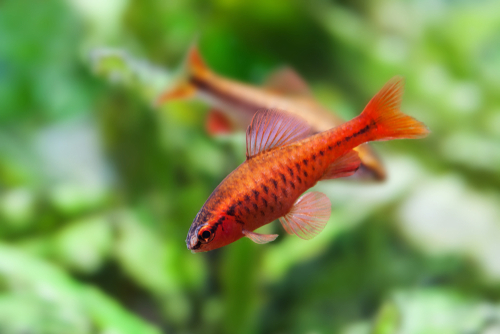
- Scientific Name: Puntius titteya
- Adult Size: 2 Inches
- Compatible With: Odessa Barb
- Care Level: Easy
- Origin: Sri Lanka
The Cherry Barb is the color of fire underwater, earning it its name. However, this fire isn’t flame alone, but is mottled with colors of burning wood in tones of brown and even peachy pink!
The Cherry Barb is a peaceful relative to the Odessa Barb who will not cause trouble or over compete for food as long as it has a school of its own to swim with.
Pros of keeping with Odessa Barb:
- No food competition
- Peaceful
Cons of keeping with Odessa Barb :
- None!
2. Bristlenose Pleco
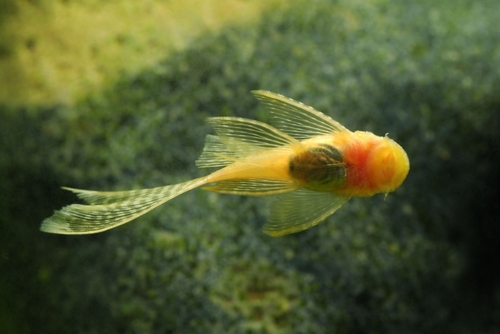
- Scientific Name: Ancistrus Cirrhosus
- Adult Size: 5 inches
- Compatible With: Odessa Barb
- Care Level: Easy
- Origin: Amazon
The Bristlenose Pleco is a favorite among aquarium hobbyists. It not only bothers nobody, but can survive in multiple conditions while cleaning up the bottom of the tank!
In addition to this, it looks visually interesting, with a small size dappled in spots and a bristly face full of “whiskers.”
Pros of keeping with Odessa Barb:
- Peaceful
- Cleans up Tank
- No Food competition
Cons of keeping with Odessa Barb :
- None!
3. Chili Rasbora
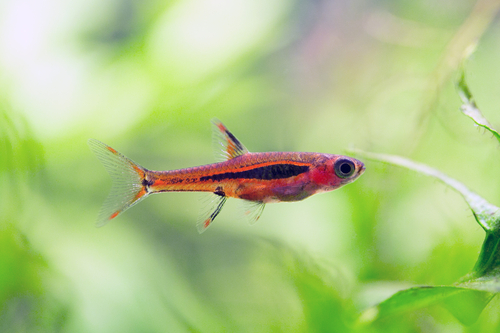
- Scientific Name: Boraras Brigittae
- Adult Size: 0.7 inches
- Compatible With: Odessa Barb
- Care Level: Easy
- Origin: Borneo
Chili Rasboras are another popular option for tank mates to the Odessa Barb not only because of their tiny size and peaceful nature, but because of their good looks. Chili Rasboras are certainly cute, like little flecks of chili pepper swimming around the tank!
These fish only live for about 8 years at the most and are easy to care for. They only require limited feedings and consistent tank parameters to live.
Pros of keeping with Odessa Barb:
- No food competition
- Peaceful
Cons of keeping with Odessa Barb :
- None!
4. Ember Tetra

- Scientific Name: Hyphessobrycon Amandae
- Adult Size: 1 inch
- Compatible With: Odessa Barb
- Care Level: Easy
- Origin: South America
Named for its glowing warm hue like a fire ember, the Ember Tetra is too small to intimidate or bully the Odessa Barb, even out of any kind of food.
Ember Tetras tend to enjoy schools of their own kind. They also love plenty of plants and caves to hide in, and will eat pellets rather than the Odessa Barb’s flakes.
Pros of keeping with Odessa Barb:
- No food competition
- Peaceful
Cons of keeping with Odessa Barb :
- None
5. Harlequin Rasbora
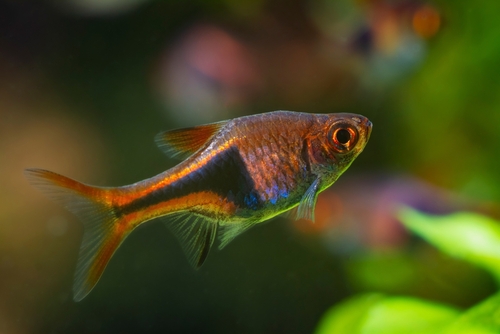
- Scientific Name: Trigonostigma heteromorpha
- Adult Size: 1.75 inches
- Compatible With: Odessa Barb
- Care Level: Easy
- Origin: Thailand, Southeast Asia, Singapore, Malaysia, Sumatra
This shimmering little fish certainly looks sporty! It is mainly a yellowish gold color with a sharp black triangle near its transparent fins.
These small fish pose no threat to your Odessa Barb. They like to be in larger schools of at least 8 if not 10 to feel safe.
Pros of keeping with Odessa Barb:
- No food competition
- Peaceful
Cons of keeping with Odessa Barb :
- Needs larger schools to swim in
6. Dwarf Cichlid
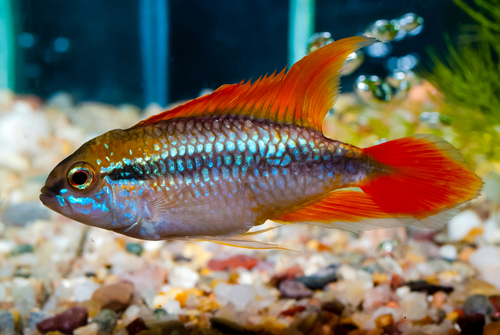
- Scientific Name: Apistogramma
- Adult Size: 3 inches
- Compatible With: Odessa Barb
- Care Level: Easy
- Origin: South America
These fish have the name of Cichlid, but they are too small to bully the Odessa Barb. Besides, Dwarf Cichlids are usually too busy having fun chasing the things they see on the other side of the aquarium glass or interacting with their surroundings to cause trouble!
These fish are noted for their large dorsal fins which come in just about every patterned color you can imagine. They are incredibly fun to watch!
Pros of keeping with Odessa Barb:
- No food competition
- Too small to be aggressive
Cons of keeping with Odessa Barb :
- None!
7. Bolivian Ram Cichlid
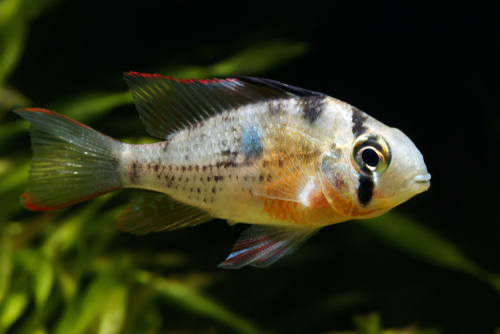
- Scientific Name: Mikrogeophagus altispinosus
- Adult Size: 3.5 inches
- Compatible With: Odessa Barb
- Care Level: Easy
- Origin: Bolivia
The Bolivian Ram Cichlid is named for the place it can be found, and is remarkably peaceful despite being a Cichlid fish. It does not have the usual marked forehead and aggression of a Cichlid, with a plainly colored body marked by black stripes or specks.
These sometimes combine into coloring the dorsal fin, interestingly enough. The Bolivian Ram Cichlid will not bully your smaller Odessa Barbs!
Pros of keeping with Odessa Barb:
- No food competition
- Peaceful
Cons of keeping with Odessa Barb :
- None!
8. Neon Tetra
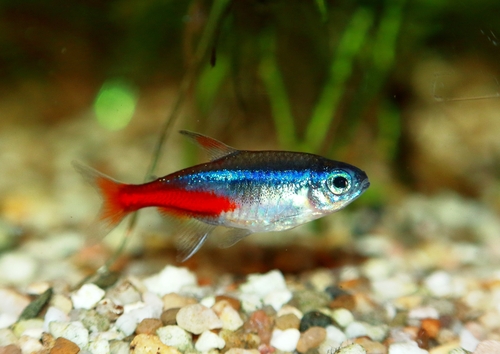
- Scientific Name: Paracheirodon innesi
- Adult Size: 1 inch
- Compatible With: Odessa Barb
- Care Level: Easy
- Origin: Peru, Brazil, Colombia
The neon tetra is named for it’s brightly colored markings, usually ranging from blue to hot pink or red. They are small and like to keep to the middle of the tank.
Neon tetras can sometimes be shy or playful depending on how many of their own kind they have to school with. They’ll make great flecks of color to compliment your Odessa Barb!
Pros of keeping with Odessa Barb:
- No food competition
- Peaceful
Cons of keeping with Odessa Barb :
- None!
9. Tiger Barb

- Scientific Name: Barbus Tetrazona
- Adult Size: 3 inches
- Compatible With: Odessa Barb
- Care Level: Easy
- Origin: Borneo, Sumatra, Indonesia
A schooling fish that is popular not just for its easy care level, but its personality, the tiger Barb is very fun to observe.
Also called the Sumatra barb and partbelt barb, this fish is a peachy pink striped with black. It is fun to dart around obstacles and chase other members of its school but will not harm your barb.
Pros of keeping with Odessa Barb:
- No food competition
- Peaceful
Cons of keeping with Odessa Barb :
- None!
10. Swordtail Fish
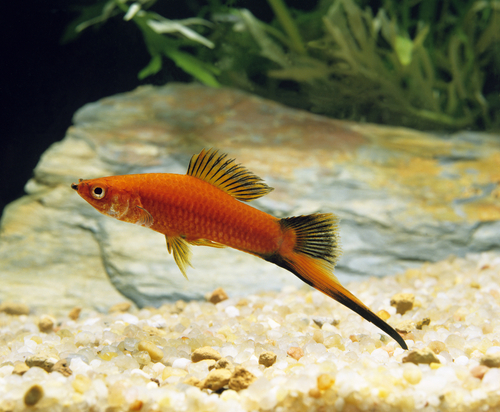
- Scientific Name: Xiphophorus helleri
- Adult Size: 3 to 4 inches
- Compatible With: Odessa Barb
- Care Level: Easy
- Origin: Central America, Mexico
This fish is small, but its visual impact on your tank will be large! An electric blue color, the swordtail fish is named for its bright neon long fins!
These fish are peaceful and won’t pose any threat of aggression to barbs, nor will they eat the barbs’ food.
Pros of keeping with Odessa Barb:
- No food competition
- Peaceful
Cons of keeping with Odessa Barb :
- None!
11. Zebrafish
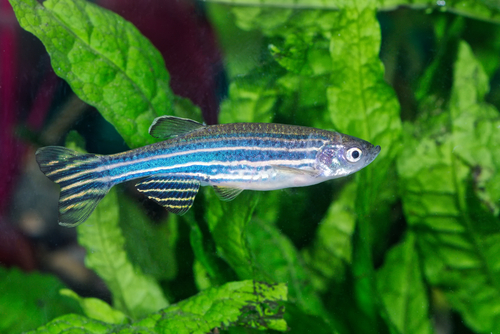
- Scientific Name: Danio rerio
- Adult Size: 2 inches
- Compatible With: Odessa Barb
- Care Level: Easy
- Origin: India
Also known as a member of the danio family or a striped danio, the Zebrafish is too small to consider your odessa barb a snack. It is generally peaceful, anyway!
Zebra Danios are another striped variety of fish to add visual interest to the tank. It is shaped like a bullet with bright striped interlocking with iridescent, dark navy stripes.
Pros of keeping with Odessa Barb:
- No food competition
- Peaceful
Cons of keeping with Odessa Barb :
- None!
12. Clown Loach
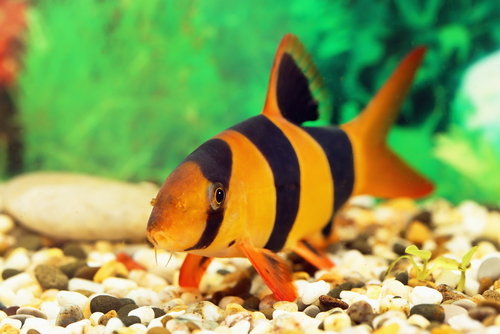
- Scientific Name: Botia Macracantha
- Adult Size: 12 inches
- Compatible With: Odessa Barb
- Care Level: Easy
- Origin: Indonesia
Despite the fact that this fish can grow to be a very large specimen, especially when compared with barbs, the Clown Loach is peaceful.
Clown loaches occupy the bottom of the tank, happily. They have small whiskers and forked fins, a clementine color striped in black.
Pros of keeping with Odessa Barb:
- No food competition
- Peaceful
Cons of keeping with Odessa Barb :
- None
13. Denison Barb
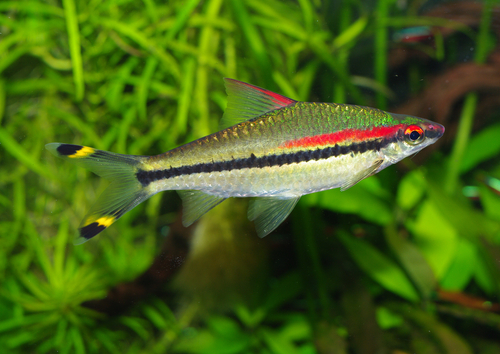
- Scientific Name: Puntius Denisonii
- Adult Size: 6 inches
- Compatible With: Odessa Barb
- Care Level: Easy
- Origin: India
Denison barbs are a fish that go by many names. They have been called red lined torpedo fish, roseline sharks, red comet barbs, and even bleeding eye barbs!
This is because of their bright red stripes, beginning at the eye and running parallel to the dark stripe that separates their olive green backs from their pale silver bellies. They are larger than the Odessa Barb, but unlikely to harm their tank mates.
Pros of keeping with Odessa Barb:
- No food competition
- Peaceful
Cons of keeping with Odessa Barb :
- None!
14. Gold Barb

- Scientific Name: Puntius semifasciolatus
- Adult Size: 4 inches
- Compatible With: Odessa Barb
- Care Level: Easy
- Origin: Taiwan, China, Vietnam
Gold Barbs are omnivores but are too mild-mannered to compete hotly for food. They love being in schools of their own kind of at least 6, too.
Generally, gold barbs are named for their bright yellow color. They also have red-orange fins and darker speckling markings.
Pros of keeping with Odessa Barb:
- Peaceful
- No food competition
Cons of keeping with Odessa Barb :
- None!
15. Black Ruby Barb
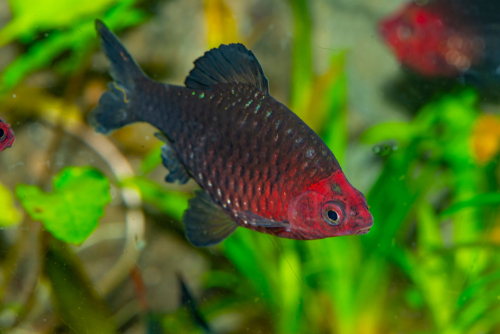
- Scientific Name: Pethia nigrofasciata
- Adult Size: 2 inches
- Compatible With: Odessa Barb
- Care Level: Easy
- Origin: Sri Lanka
Rounding out our list is another member of the barb family! Black ruby barbs are interesting in color, being mostly red with scale edgings of dark black. Black ruby barbs like to be in larger schools of their own kind.
They pose no threat to their Odessa Barb tank mates as long as having a school gives them confidence.
Pros of keeping with Odessa Barb:
- No food competition
- Peaceful
Cons of keeping with Odessa Barb :
- Require slightly larger school
In Conclusion
To sum it all up, the 15 Best Tank Mates for the Odessa Barb are fish with a similar temperament. Conflict in temperaments between fish can cause undue stress and even death due to food competition or bullying. However, as long as your Odessa Barb is kept with fish that are not too aggressive or large enough to eat your barb, you’ll have no trouble!

Ian Sterling, founder of Fishlab.com, began his aquarium journey over 30 years ago, driven by a deep fascination for fish and their diverse personalities. His website, Fishlab.com, is dedicated to making fishkeeping accessible and enjoyable, offering beginner-friendly guidance, expert insights, and a community for aquarists to connect and share experiences.


